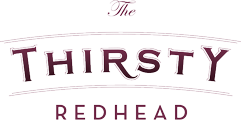This was a 60 minute timed essay that I gave up on after about 40 mins. I am disappointed that, despite working with these wines and drinking these wines for much of my wine career, that I couldn’t articulate the arguments about why they are so wonderful.
I guess that’s why I do these essays. Find my blind spots.
********************
Describe how you would teach a class on the following subject: What’s so great about grower Champagne? Your target audience is introductory wine students. Include a definition of grower Champagne, the styles of wine expected in the category, and identify at least three specific wines that you would use for tasting.
The Champagne region is one of the most northerly winegrowing regions and has been subject to tremendous vintage variation given the marginal climate. Due to this, the business structure of the region has developed whereby there are many small growers of grapes and larger négociant houses buy these grapes, make the blends and market the wine. More attention has been paid recently to the growers who make their own wines, usually called Farmer Fizz or Grower Champagne. There are several reasons why more gatekeepers and consumers are paying attention to this category of Champagne including the transparency of terroir and vintages, and tremendous value proposition.
In terms of styles, grower Champagne are made in all the expected styles including a non-vintage house style (which may change more frequently from year to year given the more limited ability to blend), rosé, blanc de blancs, blanc de noirs, and prestige cuvées. Growers will, like négociants, use both stainless steel and barrel fermentation (new and used). Again, due to the limited vineyard sources, some cuvées may not be made every year and certainly total quantities overall will be much lower than the négociant houses.
Because grower Champagne is made only from grapes owned by the grower, the grower has less ability to blend from a larger pool of wines and ‘smooth out’ differences in terroir, and this is one of the most interesting aspects of grower Champagne. This transparency of terroir can be on the grapes: wines like Egly-Ouriet will put a magnifying glass on the the power of Pinot Noir as the house is based in Ambonnay, in one of the most respected terroirs for this grape. Transparency can also be of the area: Fleury, based in the southern-most Champagne area of the Aube will show a more accessible and round style of Champagne that accurately reflects this warmer area.
Grower Champagne domaines generally have less storage capacity for reserve wines compared to négociants, and therefore, less ability to smooth out vintage variations. As a result, many grower non-vintage styles may include only three to four years’ back of reserve wine whereas négociants routinely blend back up to ten years+ of reserve wines for greater depth and complexity. Instead, less reserve wines will bring vintage variations more into focus.
While not the rule across the board, there is a trend for grower Champagnes to have a lower dosage (final sweetening adjustment immediately after disgorgement) enhancing this transparency to the terroir and the vintage.
Grower Champagnes also have a fascination because of their relative scarcity. On the other hand, there can be more value in a bottle of grower Champagne simply because these Champagnes do not have to support large marketing budgets that are necessary at the négociant houses to maintain the luxury and lifestyle aspirations associated with those wines all over the globe. Gaston-Chiquet’s non-vintage “Tradition” is a classic grower Champagne that exemplifies this value proposition. At around $45 retail, this wine is also 1er Cru and shows the complexity expected of such a high-quality wine, and is a steal compared to the more familiar entry-level Veuve Cliquot at about $60+. One gets the sense that they are paying more for the marketing budget of the latter, though that familiar ‘orange label’ will lower the risk of purchase for wine drinkers who do not spend a lot of time studying Champagne.
Transparency of terroir (grapes and/or area) and transparency of vintages coupled with the value proposition offered by the grower Champagnes makes this category of wine fascinating to gatekeepers and consumers. As Champagne is positioned as the ultimate wine of celebration, and because of the smaller volumes of grower Champagnes, both categories are important to keep up with worldwide demand, and both categories should be appreciated for their respective benefits.


